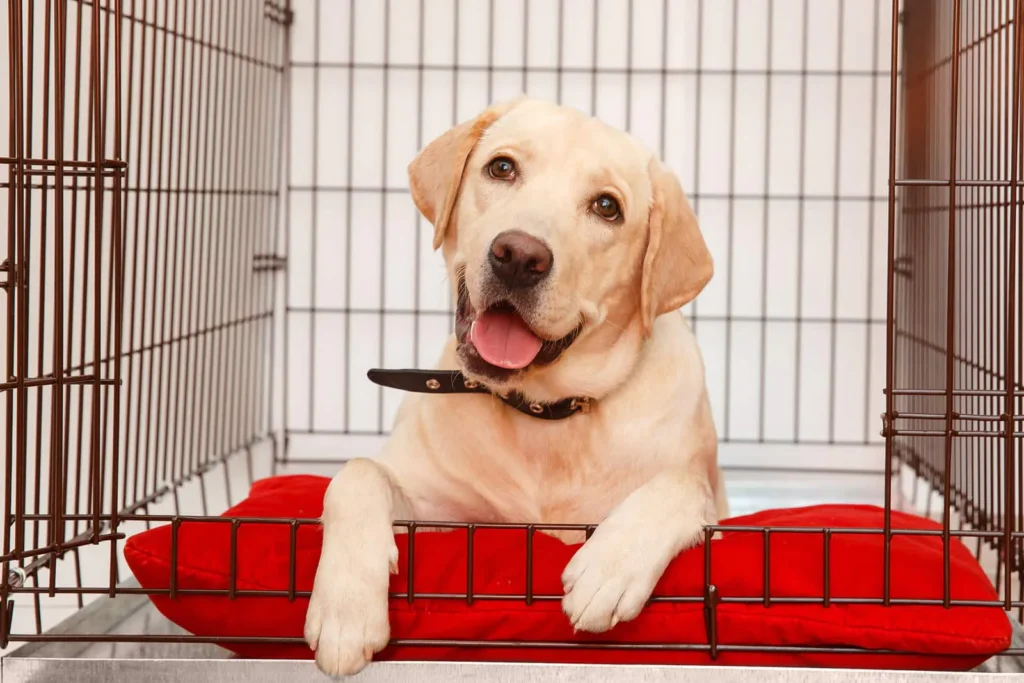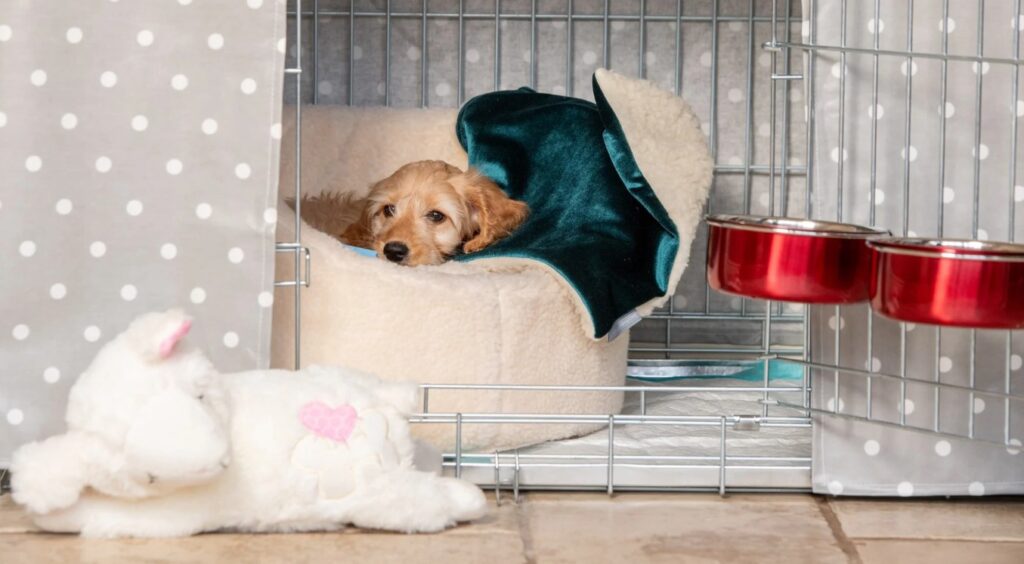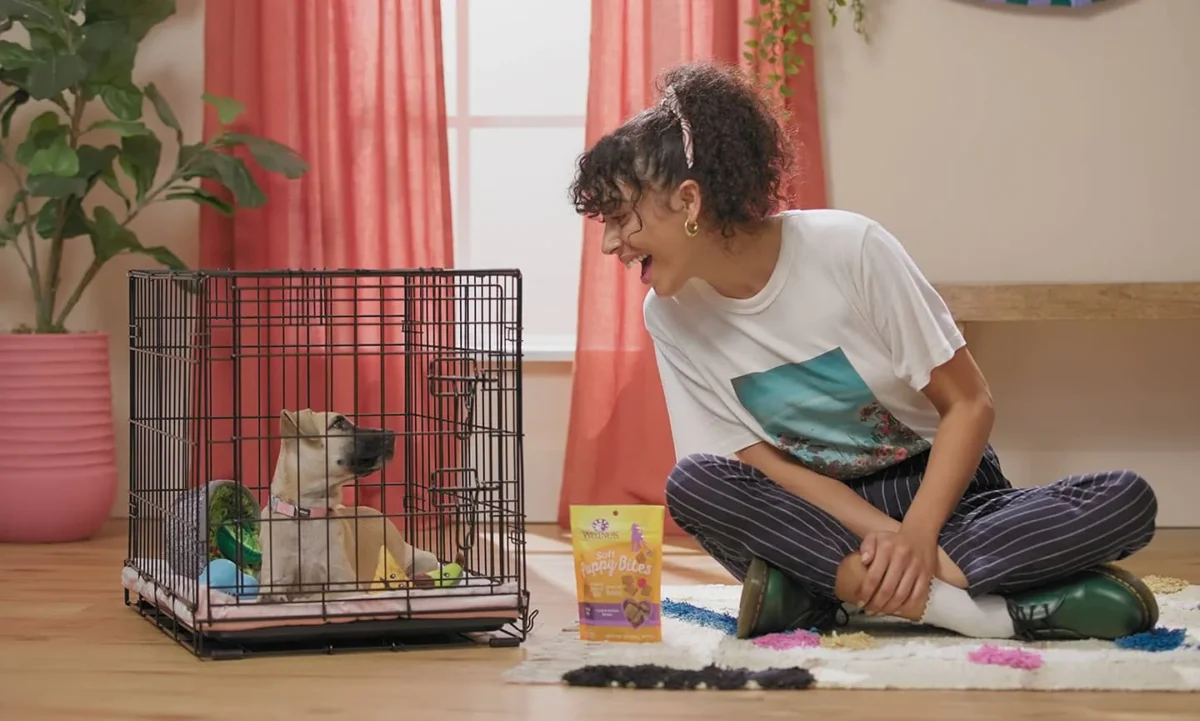Just like humans, dogs can benefit from crate training. This is a training method that involves placing your dog in a designated area where he or she can rest and relax. The purpose is to help you establish rules and boundaries for your pet, as well as to provide a place where he or she can be safe when you’re not around. It is not only beneficial for your dog; it’s also useful for improving the relationship between you and your pet. Once you understand the benefits of crate training, it’s easy to get started.
What is Crate Training?
Crate training is a training method that involves placing your dog in a small, confined area called a crate. It should be large enough for the dog to stand up and turn around, but not so large that he can’t move around comfortably. The purpose of the crate is to provide your dog with a safe place where he can relax and avoid being disturbed.
When you first get your new dog, it’s important to introduce him to the new animal cages. Place his food and water in the crate, and leave the door open so he can see what’s going on outside. Once he’s comfortable with the box, start using it as his designated resting spot during episodes of low energy or when you’re away from home for an extended period of time. Remember: always keep the door closed when your dog isn’t inside the crate so he doesn’t become accustomed to entering and exiting at will. Overall, this kind of training is a great way to help your dog feel more relaxed and secure while you’re away from home or when he needs a quiet moment.
What are the benefits?

Source: be.chewy.com
Crate training is one of the most effective ways to train your dog. It can help improve your dog’s behavior, make him more comfortable in new environments, and reduce the amount of time he spends chewing on objects or barking. Here are some benefits:
1. It can help improve your dog’s behavior
Crate training can be a very effective way to teach your dog basic obedience skills and calm him down when he’s feeling stressed. By teaching your dog to associate positive experiences – such as being inside a cozy crate – with positive obedience behaviors, you can create a strong bond between you and your pup.
2. It can make your dog more comfortable in new environments
When dogs are constantly on edge, it can be difficult for them to feel at ease in new surroundings or social situations. Crate training helps puppies develop emotional security that allows them to feel more confident when leaving the house for walks or trips to the vet. Older dogs may also find it easier to relax when confined during major medical procedures such as surgery or anesthesia.
3. Crate training can reduce the amount of time your dog spends chewing on objects or barking
One of the main problems associated with destructive chewing is that it can lead to dental trauma and even tooth loss in young dogs. By providing your pup with a safe place (in his crate) where he can chew on toys without damaging his teeth, you’re helping to prevent these problems from developing.

Source: hillspet.com
4. It can help your dog stay healthy
Dogs who chew on objects or scratch furniture are at a higher risk for developing neck and spine problems. By providing your pup with a safe place to chew – and reducing the amount of time he spends chewing on inappropriate objects – you help to protect his health.
5. It is easy to do
Crate training doesn’t require time-consuming obedience classes or complicated commands – all you need is a crate, some patience, and a positive attitude. If you’re struggling to get your pup to obey basic obedience commands, trying crate training may be the solution you’re looking for.
How to do it?
Crating your dog can be a great way to keep them safe and comfortable when you’re not home. You can also use it as a training tool to help teach your dog good habits. Make sure your crate is large enough for your dog to stand up and turn around. They should be able to lie down, sit, and stand up comfortably. Next, put the dog in the crate when you’re not home. If they have a kennel that you can leave open, do that instead.
Otherwise, close the door of the crate so your dog doesn’t get out. If they start to bark or become restless, open the door briefly and let them out before closing it again. Repeat this process until your dog shows no signs of being agitated or uncomfortable inside the crate. Once your dog is comfortable being confined in the casket, begin introducing new objects or situations into the environment while they’re inside. This could include food treats, toys, or other distractions. Gradually increase the number of items and situations until your dog is able to calmly sit or stay inside the crate during all introductions. Remember that it is a gradual process – don’t expect perfection at first! Be patient and consistent with these steps and you’ll see positive results soon!

Source: lordsandlabradors.co.uk
What to do if your dog doesn’t like it?
If your dog doesn’t seem too thrilled about the idea of being in a crate, there are a few things you can do to help make the transition easier. Start by providing them with plenty of positive reinforcement when they’re inside the crate – give them treats, pet them, or play with them while they’re inside.
If your dog is resistant to being confined at first, try placing them in the crate for short periods of time throughout the day rather than insisting they be in it from start to finish. And always make sure to introduce this method gradually – starting with brief periods and increasing as your dog becomes more comfortable.
Conclusion
Crate training is a great way to help your dog learn how to behave in public and stay out of trouble. Not only will your dog be more likely to obey you when out and about, but this kind of training can also be helpful in breaking bad habits. When done properly, it can help keep your dog safe and healthy while you’re away from home.





















